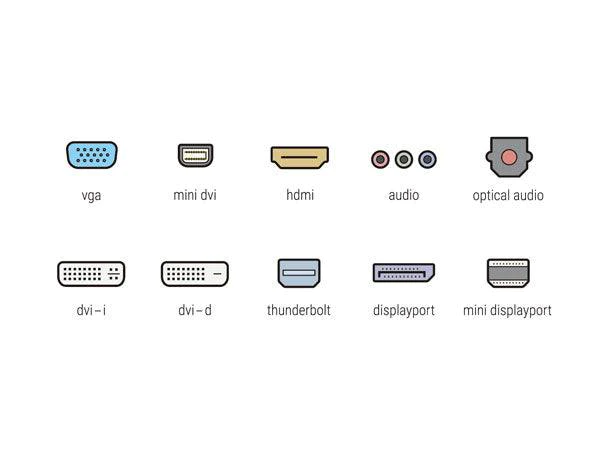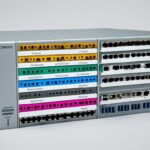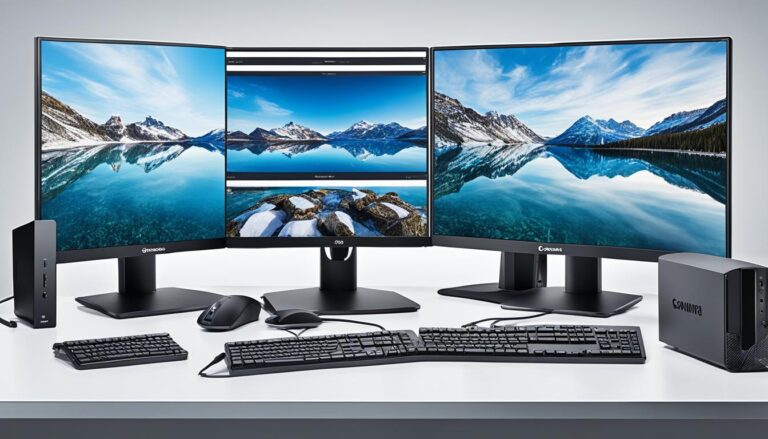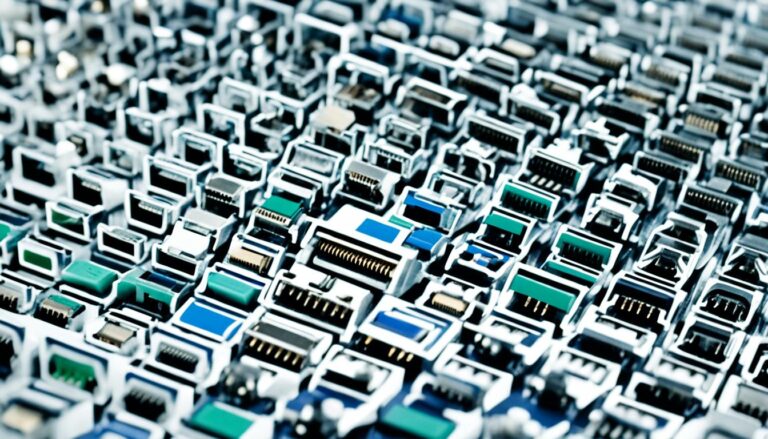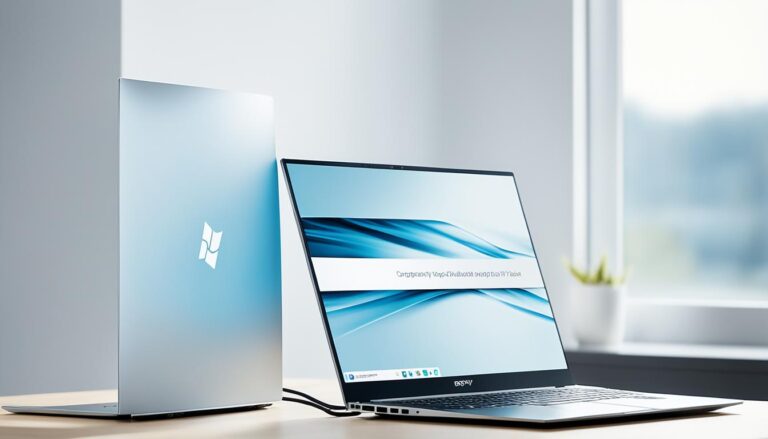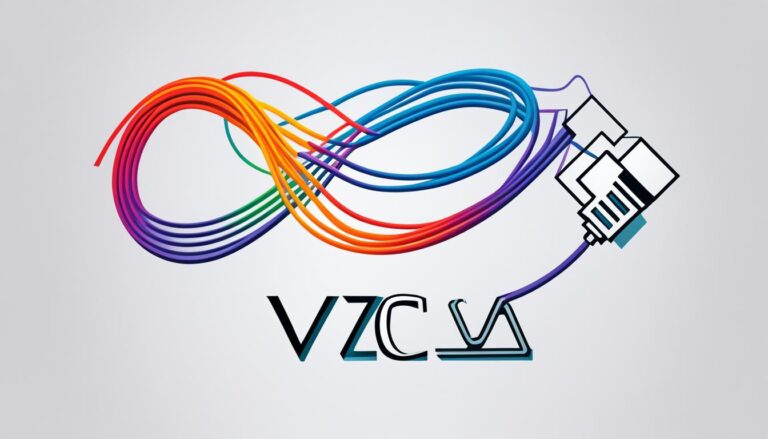Many types of monitor ports help connect displays to computers or other devices. Knowing the differences is key for the best display quality. This ensures you pick the right one for your needs.
HDMI, DVI, DisplayPort, VGA, and USB-C are all available options. Each has benefits and ideal scenarios for use. By understanding these, you choose wisely for your particular situation.
This guide will dive into each monitor port type. We’ll discuss what they offer and who they’re best for. Whether for gaming, work, or just general use, this information will guide your decisions.
HDMI – The Universal Audio and Video Connector
HDMI, also known as High Definition Multimedia Interface, is very popular. It can send both sound and picture signals. This makes it perfect for linking TVs with PCs and other gadgets. HDMI supports sharp displays and the newest sound and picture formats.
There are several HDMI cable types, like Standard, High Speed, and more. Each type offers various features and screen resolutions.
HDMI is your best pick for a reliable link. It’s great for watching films, gaming, or presentations. HDMI provides smooth connection and excellent sound and picture quality.
“HDMI changes the game in connecting audio and video. Its dual transmission of top-notch sound and sharp video makes it top choice for diverse gadgets.” – Tech Expert
Benefits of HDMI:
- Supports high-resolution displays
- Transmits both audio and video signals
- Compatible with multiple devices
- Offers superior audio and video quality
- Enables easy and hassle-free connectivity
Using HDMI for your console, Blu-ray, or laptop links to your TV means great viewing. HDMI lets you dive into excellent visuals, bright colours, and clear sound.
DVI – The Digital Visual Interface
The Digital Visual Interface (DVI) sends high-quality video signals. It’s often seen on older devices but some new monitors have it too. DVI is great for gaming and graphic designing because it supports high frame rates and clear pictures.
DVI ports have various types, like DVI-I, DVI-D, and DVI-A. DVI-I transmits both digital and analog signals. DVI-D is for digital only, and DVI-A connects to analog VGA. You’ll need the right DVI cable to connect.
DVI is different from HDMI as it does not carry audio. It only sends video. For sound, you must use separate audio connections to your speakers or headphones.
Choosing between DVI and HDMI depends on your needs. DVI can offer better picture quality and frame rates. Also, DVI cables are stronger and less likely to get interference than HDMI ones.
DVI’s resolution depends on the cable type. Single-link DVI supports up to 1920×1200 pixels. Dual-link can go up to 2560×1600 pixels. So, DVI is perfect for those who want a detailed visual experience.
DVI vs HDMI: Choosing the right connection
Choosing DVI or HDMI depends on what you need and the devices you’re using. If you need high-quality pictures and resolutions, DVI is good. It also makes sense to use DVI if your device already has a DVI port.
HDMI, however, carries both audio and video in one cable. It’s ideal for home entertainment, connecting TVs, consoles, and more. HDMI is good if you want easy connectivity for various devices.
| DVI | HDMI |
|---|---|
| Does not support audio | Supports audio and video |
| Higher frame rates and clearer picture quality | Convenient single cable for audio and video |
| Offers higher resolution support (up to 2560×1600 pixels with dual-link DVI) | Commonly used in home entertainment systems |
| More robust cables, less prone to interference | Widely compatible with various devices |
DisplayPort – The Powerhouse of Connectivity
DisplayPort is a modern port used in top-quality monitors. It delivers excellent video and audio quality. It’s ideal for gaming and video editing enthusiasts. High-resolution displays and great audio make it a top choice for an immersive experience.
DisplayPort stands out because it supports high refresh rates. This means visuals are smooth and clear, especially in fast games or videos. It’s the top pick for gamers who want clear and responsive displays. High-resolution content looks sharp and detailed, making everything look better.
DisplayPort lets you connect several monitors together with just one cable from the source. This makes setting up multiple monitors easy without losing image quality.
HDMI is another option, but DisplayPort has more to offer. It supports higher resolutions and refresh rates. This makes it better for advanced graphics and Ultra HD screens.
DisplayPort vs HDMI: What Sets Them Apart?
HDMI is common in home entertainment, but DisplayPort is better for high-quality displays. It has higher bandwidth and features like Adaptive Sync. This makes gaming smoother, with no screen tearing or stuttering.
While HDMI is used in many devices, DisplayPort is chosen by those who value performance and flexibility. It offers a way to future-proof setups.
DisplayPort keeps improving to meet new technology needs. Versions like 1.2, 1.3, and 1.4 bring new features. They offer more bandwidth, support for bigger resolutions, and better audio.
The Benefits of DisplayPort
DisplayPort is preferred by professionals and enthusiasts for several reasons:
- High-resolution support for crystal-clear visuals
- High refresh rates for smooth and fluid graphics
- Daisy-chaining capability for multi-monitor setups
- Superior bandwidth for enhanced performance
- Robust audio transmission for immersive sound
- Future-proof compatibility and advancements
DisplayPort Cable Types
Different DisplayPort cables offer various features and compatibilities:
| Cable Type | Description |
|---|---|
| Standard DisplayPort Cable | A standard cable that supports resolutions up to 1080p and basic audio transmission. |
| DisplayPort to HDMI Cable | A cable that allows the connection of a DisplayPort device to an HDMI display. |
| DisplayPort to DVI Cable | A cable that enables the connection of a DisplayPort device to a DVI display. |
| DisplayPort to VGA Cable | A cable that allows the connection of a DisplayPort device to a VGA display. |
| Mini DisplayPort Cable | A smaller variant of DisplayPort used in certain devices such as laptops. |
Choosing the right DisplayPort cable depends on what devices you’re connecting and needed compatibilities.
VGA – The Legacy Connector
VGA, or Video Graphics Array, is an old connector that was very popular before. It’s an analog port that doesn’t give as clear pictures as HDMI or DVI. Despite being less common now, you can still find it on some old equipment and projectors. It’s mostly used to link old devices to screens or projectors.
VGA doesn’t offer high resolution or picture quality like new digital connectors. However, it’s useful in certain situations. If your old computer or projector only has a VGA port, you’ll need to use it for connection.
VGA is straightforward to use. It has pins that carry the video signals, making it easy to plug in and fix issues. Plus, you can use adapters to connect it to newer devices that have digital ports.
But VGA can’t handle very high resolutions or display features. It usually supports up to 1920 x 1080 pixels, not enough for HD or multimedia tasks. For better quality or audio, using HDMI or DisplayPort is better.
Pros of VGA:
- Works with old devices
- Simple to connect
- Can use adapters for digital ports
Cons of VGA:
- Not as clear or sharp images
- Can’t handle high-end displays well
| VGA | HDMI | DVI | DisplayPort |
|---|---|---|---|
| Legacy connector | Universal audio and video connector | Digital visual interface | Powerhouse of connectivity |
| Analog port | Digital port | Digital port | Digital port |
| Lower resolution and image quality | High resolution and audio support | High resolution | High resolution and multi-monitor support |
USB-C – The Versatile Connection
USB-C, or USB Type-C, is a connector that can handle video, audio, data, and power. It’s popular across various gadgets like laptops, smartphones, and monitors. The best part? It can be plugged in any way due to its reversible design. This makes USB-C a top pick for connecting laptops to screens and a universal plug for many devices.
USB-C stands out for many reasons. Here’s why people choose it for their tech needs:
- High Data Transfer Speeds: It’s perfect for moving big files quickly or watching high-quality videos without a hitch.
- Power Delivery: USB-C can power up devices while you’re transferring data. This means you can charge and sync at the same time.
- Universal Compatibility: You can use USB-C with a wide range of gadgets. It’s handy for connecting different types of tech without stress.
- Compact and Portable: Its slim design makes USB-C cables easy to carry around. This is great for those who are always on the move.
- Audio and Video Support: USB-C delivers top-notch audio and video. This ensures a superb multimedia experience.
USB-C can even work with older USB versions through the right adaptors or cables. This backward compatibility is another plus.
USB-C Cable Types
Different USB-C cables are tailored for specific uses:
| USB-C Cable Type | Features |
|---|---|
| USB-C to USB-C Cable | Direct connection between USB-C devices, perfect for data, charging, and media transfer. |
| USB-C to USB-A Cable | Links USB-C gadgets to older USB-A inputs. Works up to USB 3.0 speed and capability. |
| USB-C to DisplayPort/HDMI/VGA Cable | Connects to external screens via different video outputs. Supports high-definition visuals. |
Picking the correct USB-C cable is vital for the best compatibility and function.
In sum, USB-C offers a mix of benefits for tech connections. It’s the go-to for linking your laptop to a monitor, charging your phone, or moving data. Its growing use and universal acceptance mark USB-C as the future’s connector to look out for.
Choosing the Right Port for Your Needs
Choosing the right monitor port is vital for your devices. The best port will make sure you get the best screen experience. Let’s discuss some key monitor ports and how they’re used:
HDMI – Ideal for Home Entertainment Systems
HDMI is perfect for home entertainment setups. It carries both sound and video, making it easy to connect your TV to a PC, games console, or streaming device. You’ll get high-quality images and sound, supporting the latest technologies.
DVI and DisplayPort – Gaming and Professional Use
For gamers and professionals, DVI and DisplayPort are top choices. DVI offers great digital video on older machines. DisplayPort brings excellent screen quality, fast refresh rates, and lets you link several monitors together.
VGA – Legacy Compatibility
VGA is good for older tech or projectors. It’s an analog option and doesn’t match HDMI or DVI in quality. But it’s still handy for connecting old devices to screens or projectors.
USB-C – Versatility and Convenience
Many new laptops, phones, and monitors have USB-C. It’s super versatile, handling video, audio, data, and power. The USB-C design makes it easy to connect without looking. For those who appreciate flexibility in their connections, USB-C is a great choice.
Think about what your devices need and how you plan to use them. Whether for a top-notch home cinema, gaming, work, or using old tech, picking the proper port is key. This ensures you get the best connection for your screen.
Conclusion
HDMI is the most popular port, great for home entertainment. It sends audio and video smoothly and supports high-res screens. This makes it handy for watching movies or playing games in high quality.
DVI and DisplayPort are top choices for gamers and professionals. DVI boosts clear visuals and high frame rates. DisplayPort, meanwhile, is perfect for high refresh rates and linking several monitors together.
VGA is getting less common nowadays. It’s not as sharp as HDMI or DVI. Yet, it’s still handy for older tech and projectors. It can be a lifesaver when you need to connect outdated devices.
USB-C is rising in popularity due to its all-in-one capability. It handles video, audio, data, and power all at once. Plus, its design means you can’t plug it in the wrong way, which is super convenient.
Choosing the right monitor means looking at what devices you use. Think about what you need to connect to get the best picture. Pick a port that meets your needs for the best experience.
FAQ
What are the different types of monitor ports?
Monitor ports include HDMI, DVI, DisplayPort, VGA, and USB-C. Each serves different needs.
What is HDMI and what is it used for?
HDMI stands for High Definition Multimedia Interface. It’s a connector that carries both audio and video signals. You’ll find it commonly used to link TVs to PCs and other equipment.
What is DVI and how does it differ from HDMI?
DVI stands for Digital Visual Interface. It’s mainly a video port that delivers high-quality visuals. It’s great for better frame rates and clearer images than VGA. But, it doesn’t carry audio unlike HDMI.
What is DisplayPort and what are its advantages?
DisplayPort is a modern monitor port. It offers high-quality video and audio. Great for gaming and video editing, it supports high refresh rates and can connect to multiple monitors via daisy-chaining.
What is VGA and when is it used?
VGA stands for Video Graphics Array. It’s an older standard that offers lower image quality. Best for linking legacy devices with monitors or projectors.
What is USB-C and why is it popular?
USB-C offers multiple uses: video, audio, data, and power transmission. It’s reversible, easy to use, and fits many modern devices like laptops and smartphones.
How do I choose the right monitor port for my needs?
Consider what you need. HDMI is top for entertainment systems. DVI and DisplayPort suit gaming and professional work. VGA works with older devices. USB-C is versatile and easy.
